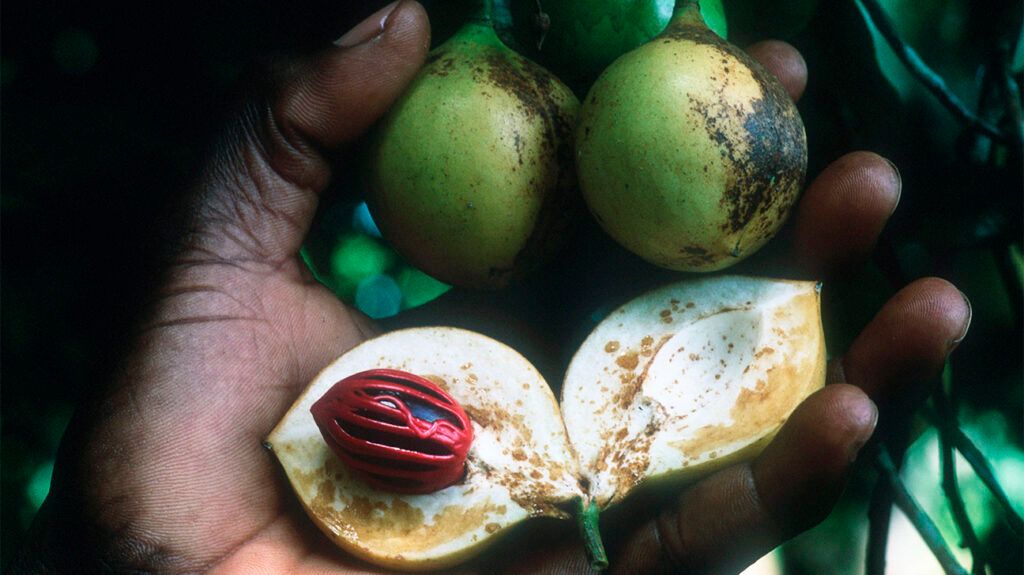Excessive consumption of nutmeg can lead to mental and physical symptoms, which some people may call a nutmeg ‘high.’ However, nutmeg intoxication is rare, and its mechanisms of action are unclear.
Nutmeg comes from the seeds of a tree called Myristica fragrans. It is indigenous to Indonesia and grows in China, Malaysia, India, Sri Lanka, and South America. It is a common spice in many cuisines, but extreme consumption can have adverse physical and mental effects.
Keep reading to learn more about nutmeg intoxication, including the symptoms, how it feels, and what causes it.

People use nutmeg when preparing and cooking food, often choosing to flavor the following foods with it:
- pies and other baked goods
- sausages
- sauces
- vegetables
- meats
- holiday beverages
Some people also use nutmeg as part of traditional remedies for treating stomach aches, diarrhea, nausea, and rheumatism, among other conditions. Certain extracts, such as nutmeg oils, may also have antimicrobial properties.
Myristicin is the chemical compound in nutmeg that may play a role in intoxication.
When a person consumes myristicin, the body metabolizes it, partially forming 3-methoxy-4,5 methylenedioxyamphetamine (MMDA). MMDA has hallucinogenic properties and may lead to intoxication symptoms associated with extreme nutmeg consumption.
However, studies are yet to conclusively prove that myristicin metabolism is the root cause of nutmeg intoxication. Other compounds in nutmeg, such as elemicin and safrole, may play a role in symptom development.
There are only limited case reports of nutmeg intoxication, and symptoms can differ on a case-by-case basis.
For example, in a 2023 case report, nutmeg intoxication led to fever, aggression, and agitation. Meanwhile, an older
Other reported adverse physical effects associated with nutmeg intoxication
- vomiting
- ileus, which is a lack of movement in the bowel
- a burning or prickling sensation in the hands, arms, legs, or feet
- numbness
- low blood pressure
- increased heart rate
If a person is showing signs of poisoning, it is important that they get medical help immediately.
If a person is unconscious, a companion or bystander should place them in the recovery position while waiting for medical help to arrive. Doing this involves lying them on their side with a cushion behind their back to stop them from rolling backward. Bending their upper leg and moving it in front of their body to lean on the ground can prevent them from falling onto their face.
The symptoms of poisoning vary depending on what substance the person has ingested, but general signs include:
- vomiting
- stomach pains
- confusion
- drowsiness
- fainting
In some more serious cases, a person may have to stay in the hospital for treatment. Medical professionals may treat nutmeg poisoning with:
- intravenous fluid
- benzodiazepines
- activated charcoal
- oxygen
In small amounts, such as those that standard cooking recipes use, nutmeg is safe. However, if a person consumes larger doses of this spice, they may experience nutmeg intoxication.
The risks increase further if the person has consumed large doses of nutmeg in combination with other harmful drugs.
If someone has ingested a large amount of nutmeg or is showing signs of nutmeg poisoning, it is important that they get medical help right away.
